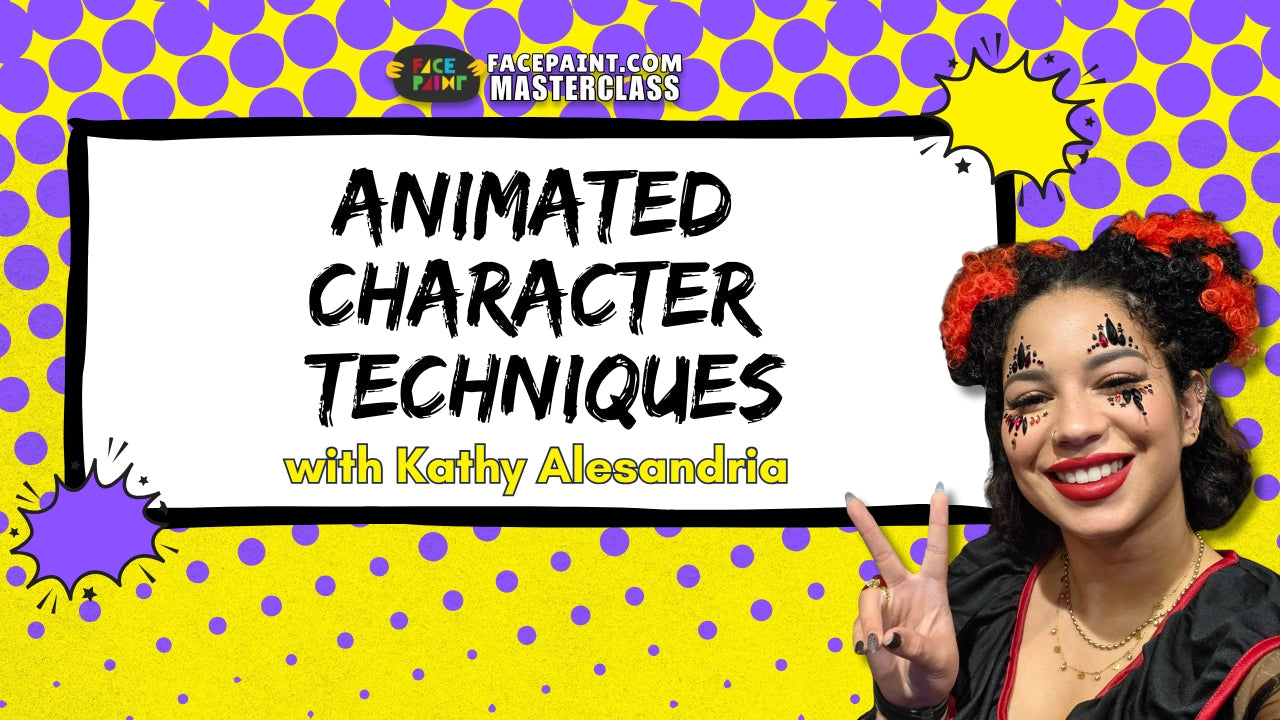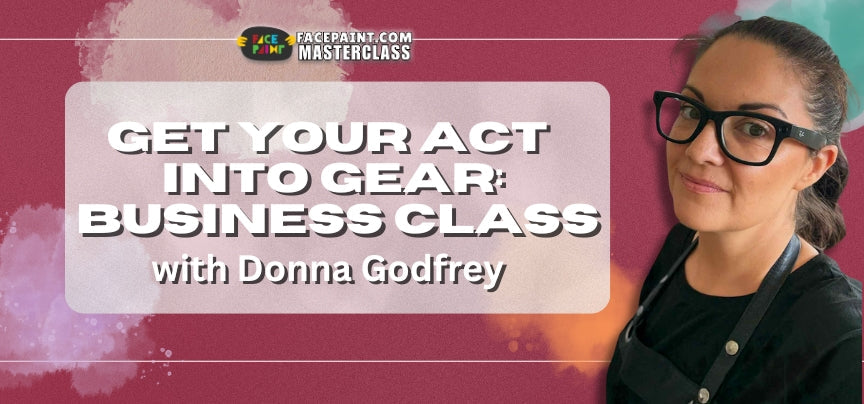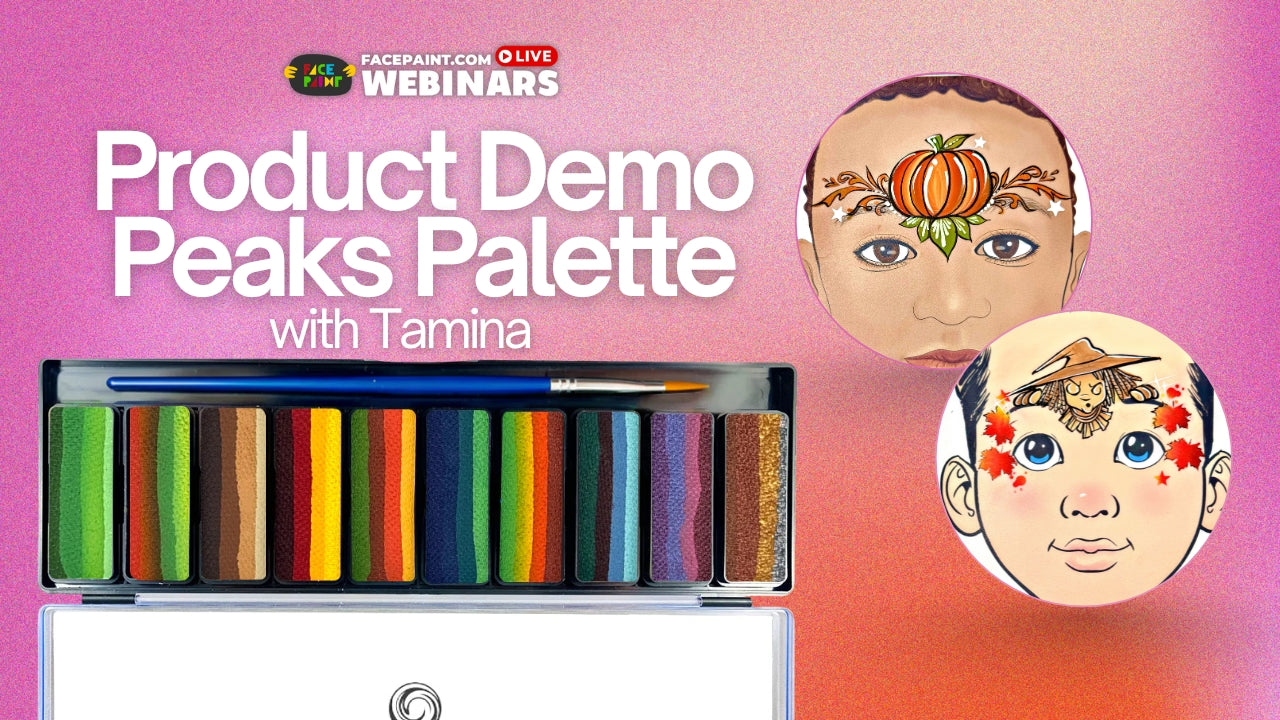In our previous post, we talked about basic design and supplies for creating bling clusters. Today we’re going to walk through the actual process of creating the clusters. There are variations in the process, and over time you’ll discover which work surfaces, gems, and binders work best for you. I hope this post will make it easier as you jump into creating beautiful bling clusters for your customers.
1. Prepare your work surface and assemble your materials before you begin
Face painters use various plastic surfaces for assembling gems. Most use either plastic bags or plastic page protectors. You can try using page protectors as they are, or you can put strips of heavy duty packing tape over them. The page protectors I tried didn’t work well, so I found it necessary to put packing tape over the surface so I could easily remove the gems later.
Supplies:
• An assortment of large, medium, and small gems and pearls in all colors
• Toothpicks or bamboo skewers
• Liquid bandage
• Medical or pet silicone or dimensional fabric paint (DO NOT use silicone from a hardware store. The silicone you would find in a hardware store has chemicals which you don’t want on the skin, even when the silicone is in its inert form.)
• Plastic page protectors or plastic bags
• Graph paper
• Heavy duty packing tape
• Black card stock (optional)
• Glitter tattoo adhesive or eyelash adhesive (Quo is latex-free and water soluble)
• Paper towels
• Wax paper

2. Choose the base for your clusters
It’s optional, but some face painters put a primary base down with liquid bandage. (This is recommended by Lilly Walters Schermerhorn in order to make a more skin-safe layer beneath the cluster.) If you choose to do this, the liquid bandage should be spread over the entire area you’ll be placing your gem cluster on. Don’t worry about the excess sticking out, because you can trim it after it dries. Once it dries on the plastic, it will be hard to see, so the grid beneath the plastic helps you know where you put it.
3. Squeeze some of the binder you’ve chosen onto the plastic surface which will hold your gems
If you’re using a transparent sheet protector with graph paper inside it, the graph paper will help you keep your cluster symmetrical. If you use silicone, make sure it’s medical or pet silicone rather than the type you’ll find at a hardware store. The hardware variety has chemicals you don’t want next to your skin. For silicone, immediately place the gems, being sure to avoid getting the liquid silicone on your skin. If you use dimensional fabric paint, you’ll need to wait a few minutes for it to begin to set before adding your gems. (Personally, I find it easier to use the Tulip 3D fabric paint, which you'll see as an option in the next photo.)
For the larger gems, you should be able to drop them into place with your fingers, but for the smaller ones, toothpicks or bamboo skewers will come in handy of carefully moving them into position on the silicone or the clear dimensional fabric paint. Also, you can use a wax-tipped gem tool for placing gems.
Scrape away excess silicone and wipe it on a piece of paper towel. You can cut or tear the extra pieces off later, but it makes for a cleaner gem cluster if you’re able to wipe away the extra while it’s still wet.
4. Allow your cluster to cure completely before removing it from the plastic
For silicone, it should take approximately 24 hours, but dimensional fabric paint will take about 48 hours or more to dry. Liquid bandage is especially helpful if you're using the 3D paints, because it creates a barrier behind the larger gems so they don't stick as much and are removable sooner. It always takes longer for the paint to dry behind large gems, and for the 3D paint, this can be as long as a week. If your silicone is still gooey after 24-36 hours, it’s possible you have a bad batch. This isn’t common, but it happened to me. I had to return the tube and get a replacement. Also, make sure you NEVER put silicone which is still liquid on skin.
5. After the gem clusters are ready, remove them from the original plastic and trim the excess liquid bandage, silicone, or dimensional fabric paint from around the clusters
If you didn’t use the liquid bandage, they should still have the ability to cling to the plastic, so you can either replace them on the page protector or move them to a new surface. If you used liquid bandage, they won’t feel sticky on the back anymore. To make them adhere to your plastic again, brush some glitter glue adhesive on the back and let it dry. When it’s dry, stick the cluster back down on your plastic. Some face painters carry their clusters in binders. I put my clusters on black sheets of card stock with clear plastic packing tape on them. I put these in small zippered bags for easy transportation and use.

6. Choose an adhesive which is skin safe for applying the gem clusters when they are ready
To apply the gems, face painters recommend a few different adhesives. Lilly Walters Shermerhorn recommends using a few small dots of glitter glue adhesive on the back of the cluster. I use this too, because I have glitter glue adhesive already in my kit. Karen Husted uses Quo #1 eyelash adhesive, but warns that it must be used sparingly or it won’t work well. Whichever adhesive you choose, make sure it is latex-free and that your customers know how to remove it later.
I hope you enjoy creating your own gem clusters and that your customers are enchanted with the results!
Did you miss Part One? Click to watch!
Beth MacKinney is the owner of and primary face painter for Face Paint Pizzazz in the NW Chicago suburbs. She also writes blogs and tutorials for Clownantics.com.
 FREE SHIPPING FOR USA ORDERS OVER $100
FREE SHIPPING FOR USA ORDERS OVER $100















FacePaint.com
December 03, 2019
Normally I would mount them on large 8.5×11 page protector sheets over card stock and keep them in my CNG kit, but for small parties, I cut the card stock down into 4ths and put the clear plastic packing tape over the 5.5×4.25 rectangles.
The smaller pieces don’t hold as many pieces of bling, so fewer choices for the kids usually means they will choose faster.